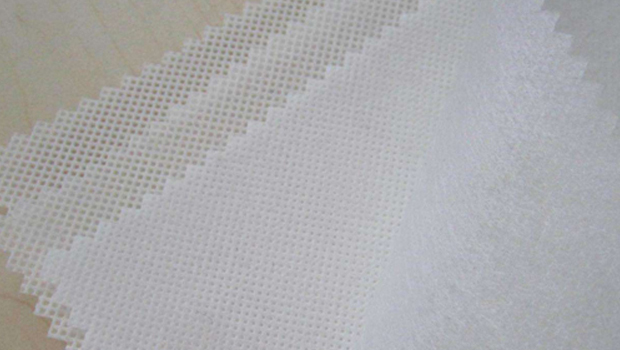
The non-woven fabric we are talking about here generally refers to the non-woven fabric of the greenhouse, which is a thermal insulation quilt used for thermal insulation in the vegetable greenhouse in the popular sense, or the thermal insulation material used in the chicken and duck shed. It is very long Since time, we have always had a common understanding, that is, his sales and seasonality are very large, so, is it really like this? Let's analyze it together.
If we only apply this kind of non-woven fabric narrowly to the greenhouse, then, undoubtedly, the season is his biggest natural enemy, and the impact is basically 100%. Only when the weather turns cold, it is only used. Will play a corresponding role in the insulation of vegetable greenhouses, but is this really the case? As the non-woven fabric of this material is more and more widely used in other industries, the seasonal impact has become less significant. Aluminum coated non-woven fabrics for road maintenance, non-woven fabrics for greening, etc. The sudden rise in the field has fully proved that after we left the vegetable greenhouses, there was also a lot of use.
Therefore, our blind emphasis on the concept that non-woven fabrics will be affected by seasonality will become smaller and smaller, but we can’t deny that the non-woven fabrics in the greenhouse are still used in all current uses.
Part of it will be affected more or less.

Non-woven fabrics do not have warp and weft threads. They are very convenient for cutting and sewing, and they are lightweight and easy to set.
Because it is a fabric that does not require spinning and weaving, it is simply oriented or randomly arranged textile short fibers or filaments to form a web structure, which is then reinforced by mechanical, thermal bonding or chemical methods.
It is not interwoven and braided by individual yarns, but the fibers are directly bonded together by physical methods, so when you get the sticky name in your clothes, you will find that It's impossible to pull out any thread. Non-woven fabrics break through the traditional textile principles, and have the characteristics of short process flow, fast production rate, high output, low cost, wide use, and many sources of raw materials.
The relationship between non-woven fabric and spun-bonded fabric
Spunbond and non-woven fabrics have a subordinate relationship. There are many production processes for the manufacture of non-woven fabrics, of which the spunbond method is one of the production processes of non-woven fabrics.
Spunbond nonwoven
(Including spunbond method, melt blown method, hot rolling method, spunlace method, most of the non-woven fabrics produced by spunbond method on the market now)
According to the composition of non-woven fabric, there are polyester, polypropylene, nylon, spandex, acrylic, etc.; different compositions will have completely different non-woven fabric styles. Spunbond fabrics usually refer to polyester spunbond and polypropylene spunbond; the styles of these two fabrics are very close, and can only be distinguished by high temperature testing.
Non-woven fabric is a kind of non-woven fabric, which directly uses polymer chips, short fibers or filaments to form fibers through airflow or mechanical, and then is reinforced by hydroentanglement, needle punching, or hot rolling, and finally after finishing The formed non-woven cloth. The new fiber products with soft, breathable and flat structure have the advantage that they do not produce fiber debris, they are strong, durable, silky and soft, and they are also a kind of reinforcing material. They also have a cotton feel. Compared with cotton fabrics, non-woven Cloth bags are easy to form and cheap to manufacture.
advantage:
1. Lightweight: Polypropylene resin is the main raw material for production, with a specific gravity of only 0.9 and only three-fifths of cotton. It is fluffy and feels good.
2. Softness: Composed of fine fibers (2-3D), light spot-like hot-melt bonding. The finished product is moderately soft and comfortable.
3. Water repellent and breathable: polypropylene chips are non-absorbent and have zero moisture content. The finished product has good water repellent. It is composed of 100% fiber with porosity and good permeability. It is easy to keep the cloth dry and easy to wash.
Polypropylene nonwoven
4. Non-toxic and non-irritating: The product is produced with FDA food-grade raw materials, does not contain other chemical ingredients, has stable performance, non-toxic, no odor, and does not irritate the skin.
5. Antibacterial and anti-chemical agents: Polypropylene is a chemically inactive substance, not moth-eaten, and can isolate the erosion of bacteria and insects in the liquid; antibacterial, alkali corrosion, and finished products do not affect the strength due to erosion.
6. Antibacterial. The product is water-removing, not moldy, and can isolate the erosion of bacteria and insects in the liquid, and is not moldy.
7. Good physical properties. It is made of polypropylene spinning directly laid into a mesh and thermally bonded. The strength of the product is better than that of ordinary staple fiber products. The strength is non-directional and the strength in the vertical and horizontal directions is similar.
8. In terms of environmental protection, the raw material used for most non-woven fabrics is polypropylene, and the raw material for plastic bags is polyethylene. Although the two substances have similar names, they are far from each other in chemical structure. The chemical molecular structure of polyethylene is quite stable and extremely difficult to degrade, so the plastic bag takes 300 years to decompose; and the chemical structure of polypropylene is not strong, and the molecular chain can be easily broken, which can be effectively degraded And enter the next environmental cycle in a non-toxic form, a non-woven shopping bag can be completely decomposed within 90 days. Moreover, non-woven shopping bags can be reused more than 10 times, and the environmental pollution after disposal is only 10% of the plastic bags.
Disadvantages:
1) Compared with woven cloth, the strength and durability are poor.
2) It cannot be cleaned like other fabrics.
3) The fibers are arranged in a certain direction, so it is easy to split from the right angle and so on. Therefore, the improvement of production methods is mainly placed on the improvement of preventing division.